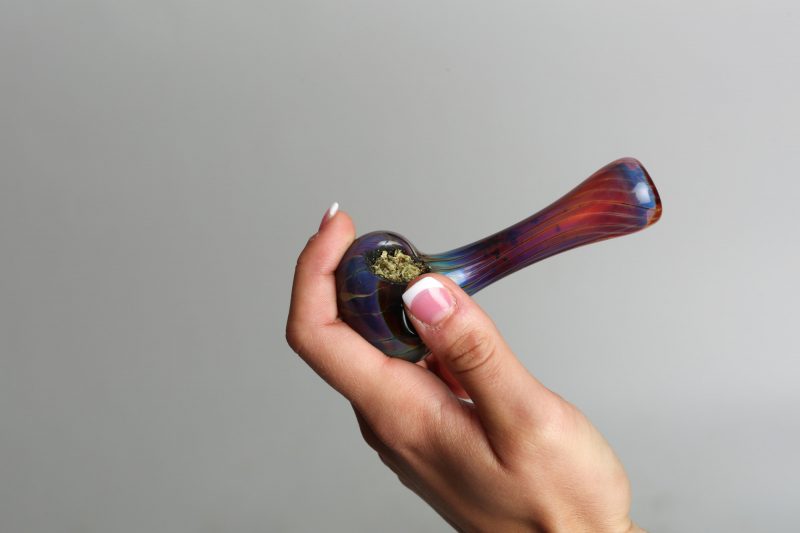Recreational marijuana use is legal in Washington D.C. and 11 other states. And a little under half of all American adults admit to using marijuana at least once.
Do you use cannabis? Do you admire the many and varied glass pipes from which to smoke your favorite herb?
Have you ever wondered where your pot paraphernalia comes from? If so, here’s a peek behind the scenes.
ADVERTISEMENT |
Read on for a little insider’s knowledge of the amazing process of crafting glass pipes.
A Brief History of Glass
Glass blowing is an ancient art dating back to about 1500 BC. Back then, craftsmen were glazing tiles and creating glass beads. Modern artists still glaze pottery with glass.
Through studying ancient glass, it’s clear that glassblowers of today use time-tested methods. Glass comes from sand that’s heated to over 1700 degrees Celsius until it’s transformed to a liquid.
Once the liquid cools, it’s no longer sand as we know it. Its structure changes to glass.
ADVERTISEMENT |
Glass has so many everyday uses, from windows to drinking vessels and, of course…
Beautiful Glass Pipes
Pipes aren’t new. But glass pipes are a more modern invention, though it’s not known their exact origin. As glassblowing techniques improved over the last 50 or so years, glass pipes were part of the evolution.
Pipes were first made from available materials such as corncobs and wood. Native Americans also used antlers from elk and deer.
Glass is not only practical, but it also turns the pipe into a work of art
Now there are so many types of glass pipes available from a place like ZOB Glass, you might decide you need two!
ADVERTISEMENT |
The Artisan and the Process
But how are glass pipes made?
It starts with a skilled artisan. It takes an experienced glassblower to get this process right.
From cracking to overheating the colors, there’s much that goes wrong while learning the process. Most artisans start with glass bowls (hand pipes). These aren’t as complex as a bong.
ADVERTISEMENT |
The glassblower starts by making a large glass tube. Then he pinches it down to about a 4-inch section and separates it from the rest of the tube.
The artisan decorates the section in any manner of techniques. From fuming to caning and latticino, there are many decorative techniques.
Next, the artisan works on shaping the pipe. The neck is stretched by heating the glass. After forming the neck, the mouthpiece is shaped.
ADVERTISEMENT |
After the mouthpiece comes the bowl. This is where glassblowing becomes reality as the artisan blows into a tube, shaping the bowl. He works the glass in a circular motion on a stone block in front of the flame.
It’s through this process that the shape remains consistent and even. At this point, the artisan adds side grips or other accents on the pipe.
A “bowl push” creates space for cannabis. This is done by pushing a metal rod into the bowl area. The hot pipe gets pressed onto a plate for the last step. This flattens the bottom so the pipe doesn’t tip over when set on a flat surface.
ADVERTISEMENT |
The artisan pierces a hole for the “carb” where the smoke travels through. The bowl is then fired in the kiln or broken clean from the handle.
Different Types of Glass Pipes
There are several popular types of glass pipes. Each type of glass pipe has its advantages and adherents. Choose the one that works best for you.
Chillums
The chillum is a basic glass tube pipe, though depending on the artist, it looks anything but simple. This glass pipe is akin to the hollow reed once used by indigenous people.
ADVERTISEMENT |
The herb goes in one end. It’s then lit while you inhale from the other end. You’ll only use a small amount of cannabis in a chillum. Because there’s no carb, the smoke can taste stale.
Spoon Pipe
The spoon pipe is a little more complex than the chillum pipe. This glass pipe has a small bowl on one end.
The herb goes in the bowl. The small hole (carb), or carburetor, keeps the smoke fresh.
When smoking with a carb, there’s a technique. Cover the hole with your finger. This draws air in through the bowl.
ADVERTISEMENT |
Uncover the hole when inhaling. This process keeps the smoke fresh.
Bubbler Pipes
As the name implies, bubbles are part of this glass pipe. The bubbles are in the water.
This pipe is a cross between a bong and a glass pipe. It’s a small glass pipe that uses water. Water makes the smoke smoother since it filters it.
ADVERTISEMENT |
The name of the pipe is from the tiny bubbles created in the water. A bubbler reduces the harshness of the smoke. Try a bubbler with cold or hot water and notice the change in flavor and experience.
The Sherlock
Remember the iconic pipe used by Sherlock Holmes? The Sherlock gets its name from the recognizable pipe of the literary character.
There’s a long stem with a bowl at the end. As with the other pipes, the bowl holds the product. The Sherlock comes with and without carbs.
ADVERTISEMENT |
The Steamroller
The steamroller is complex and hard to make. It has a bowl on the end of the glass tube. But it also has openings on both ends.
The opening near the bowl is the carb. Sometimes there’s even an extra chamber that adds an extra layer of cooling to the smoke.
The hit is fast and powerful, thus steamrolling unprepared users. If you’re a first-time user, try a more traditional glass pipe.
ADVERTISEMENT |
Enjoy Your Glass Pipes
Glass pipes are beautiful and practical. They come in so many types and shapes, it’s easy finding one you’ll love.
Made from borosilicate glass, these pipes stand up to temperature changes and cleaning. You’ll get many years of use out of a good glass pipe.
If you’re starting out, try a chillum or spoon first. You can always add to your collection of beautiful glass pipes.
ADVERTISEMENT |
Enjoyed the article? Browse our online magazine for more great lifestyle tips!





